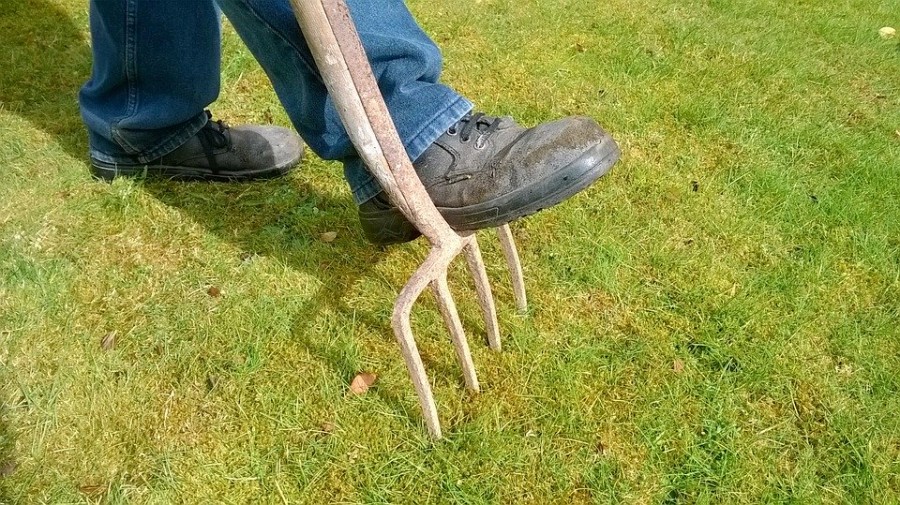How to Aerate your Lawn
What is aeration?
Perforation of the soil to allow air, water and nutrients to penetrate the grass roots. Aeration can be undertaken all year round.
Why do I need to aerate my lawn?
Aeration helps the roots grow deeply and produce a stronger, more vigorous lawn. The main reason for aerating is to alleviate soil compaction. Soil compaction limits the amount of nutrients and water to penetrate the roots of your lawn.
How do I aerate my lawn?
A smaller area of lawn can be aerated manually with aerating sandals (sandals with spikes that aerate the lawn as you walk) or a sturdy garden fork. Simply insert the fork into the lawn and wriggle it back and forth to fracture the soil profile. Aim for a spacing between the holes of around 8 – 10cm. In order to achieve adequate aeration, you may need to go over the area twice in a different direction each time.
You can hire specialised aerators if you have a large lawn. A spiked roller is also useful for lawn aeration for incorporating lime, gypsum, or coarse sand into the profile to improve drainage or pH. Unlike regular aeration, where solid tines simply punch holes in the ground, core aeration removes a plug of soil from your lawn at the same time. You can read more about core aeration here.
How often should I aerate my lawn?
Different soil types require more frequent aeration. Clay soil compacts easily and should be aerated at least once a year. You can aerate a sandy lawn once a year, or once every two years. In harsher climates, aerating twice a year will encourage turf growth and health.
In areas where there is a high amount of foot traffic, pets or even cars on the lawn, compaction is a common problem. Regular aerating will be important to ensure the ground doesn’t become too hard and help the soil to breathe and the grass to spread.
When should I aerate?
The best time to aerate warm season grasses, such as soft-leaf buffalo, couch, kikuyu and zoysia is during spring and summer while they are actively growing. You can aerate at any time of the year, but if you do so in the cooler months just keep in mind the grass won’t cover over the aerated holes as it is dormant. Always try to aerate at the same time you are fertilising or performing any other major lawn care operation such as dethatching and top dressing. It is also a fantastic time for aeration after rainfall, as it will make this process much easier.
For cool season lawns, such as fescue and rye grass, the same principle applies. With proper care and a lot of water, cool season lawns can grow all year (with the exception of very cold climates) so you can aerate all year round. Again, keep in mind the absolute best times are when you fertilise or perform any other lawn care and following rainfall, so soil moisture levels are high.
Aerating is often overlooked, but its importance in allowing air, water and nutrients to get into the soil cannot be overstated.



